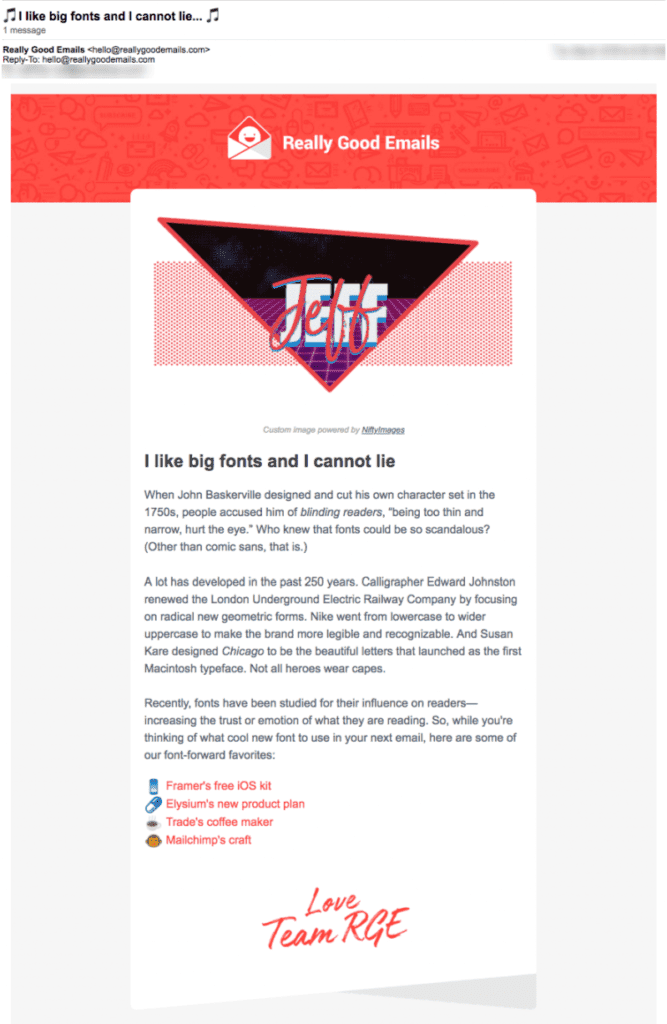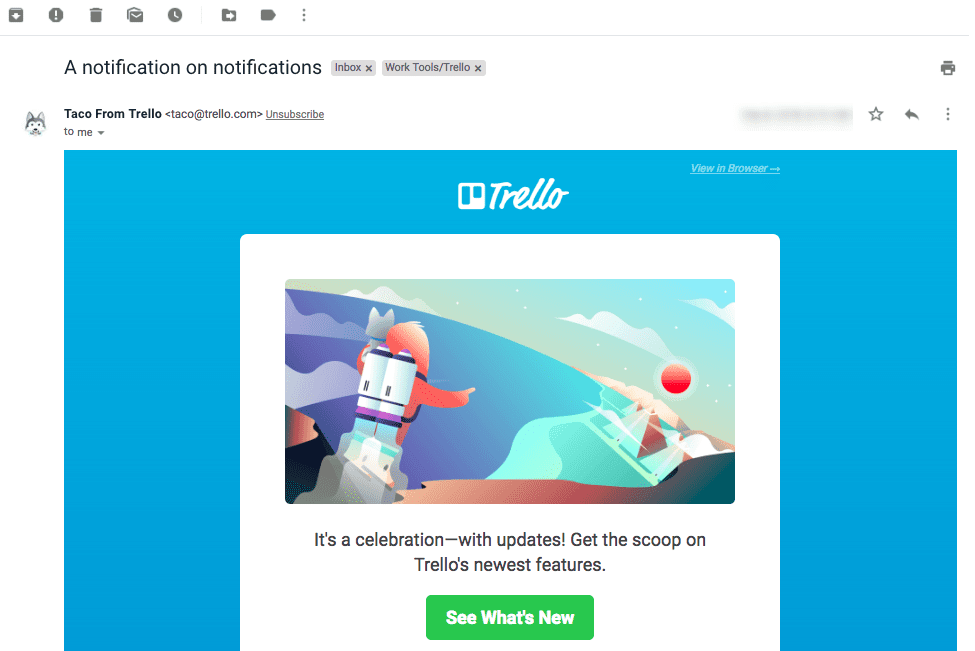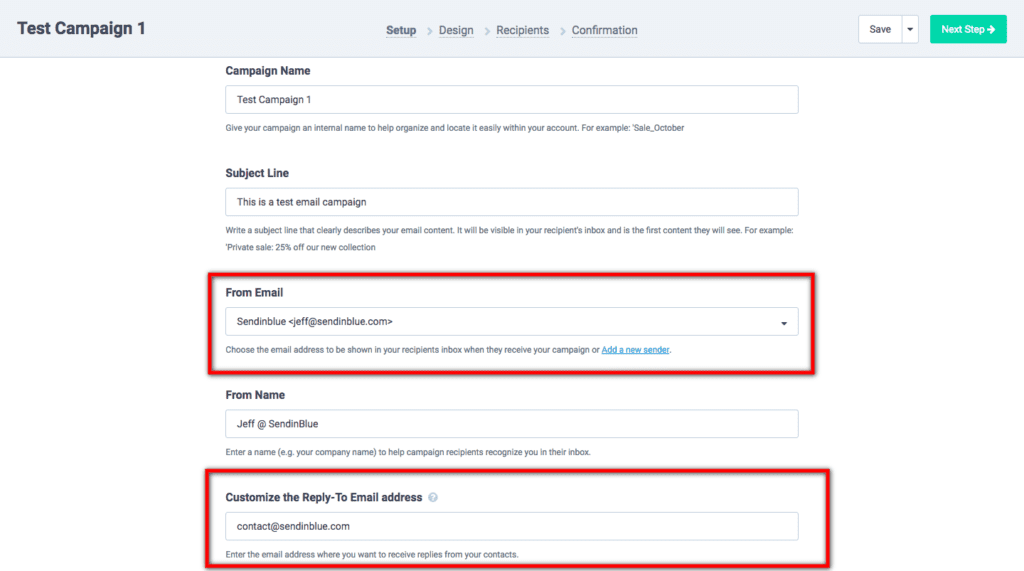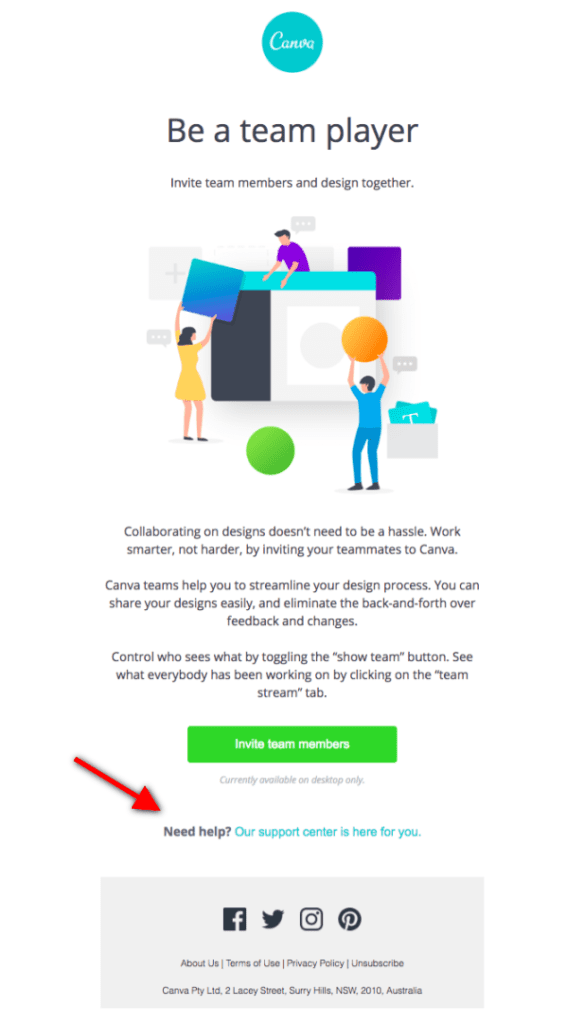

What is a noreply?
A noreply is an email address using the format “noreply@company.com.” Many businesses use noreply email addresses to discourage the recipient from sending a response to their transactional emails or email marketing campaigns.
Have you recently received an email from a noreply@company.com email address? While it’s becoming less common, many businesses still use this type of sending address for certain messages, including order confirmations, subscription confirmations, notification emails, etc.
Email marketing requires a certain level of mutual trust between the sender and the recipient.
When contacts sign up for your email list, they’re giving you permission to send messages directly to their inbox. Conversely, businesses rely on subscribers to engage with their emails as part of maintaining their business.
Still, many businesses go against this mutual trust by using a noreply email address in their marketing emails and newsletters.


In this article, we’ll cover why you should avoid sending a noreply email like this and how you can replace it with something better.
Why you shouldn’t use a noreply email
Your customers won’t appreciate it
The reason businesses use a noreply email address is to avoid receiving any responses from customers.
The goal, presumably, is to save time and mitigate the number of people who respond by forcing recipients to look up your contact information or fill out a form if they have a question.
That’s not a good look.
No matter how big your business is, your customers are all individuals.
They don’t like to be treated as if they’re part of some elaborate Rube Goldberg machine that churns out sales for your business. But if you use a do not reply email address, you’re essentially telling customers just that.
So, even if you do succeed in saving time using a noreply email, you’re doing so at a cost to your reputation and customer satisfaction.
You’re probably hurting your email marketing
Using a noreply can have serious negative effects on your email marketing, including:
- Tarnishing your brand and diminishing trust in the inbox, which leads to drops in engagement.
- Preventing contacts from communicating with you, which defeats one of the main email marketing benefits of building better customer relationships.
- Harming your email deliverability resulting from people auto-filtering noreply emails as spam in their inbox.
If those weren’t good enough reasons for you, consider the fact that it’s illegal to send emails with an address that can’t receive responses.
This might seem like overkill, but it actually makes sense. A subscriber needs to be able to contact you when they want to opt out.
Many email recipients click “reply” and send a response when they’re trying to unsubscribe because they don’t see the link (or worse, the email doesn’t have an unsubscribe link).
When the response doesn’t go through, they’ll mark you as spam so they don’t have to receive your emails anymore. Yet another way your deliverability can be affected by using a noreply email address.
So rather than creating a dead end for your customers, give them the opportunity to respond. It’ll help build their trust in your business.
What happens if you reply to a noreply email?
The email will not be ignored and you’ll get a message from your email provider to say the email was not sent.
Invite engagement from your email contacts
Hopefully, it should be clear that using a noreply email in your email marketing is a bad idea.
Instead, you should focus on sending newsletters and transactional emails that are more personalized and engaging. The best way to do this is to show customers your real brand personality rather than shutting them out.
A great way to see this brand personality in action is to look at good examples of email newsletters. Check out the awesome newsletter from Really Good Emails below:


Not only do they do a great job apersonalizing the content of their email (who doesn’t love a giant ’80s style banner with their name on it). But they also managed to showcase their brand personality by injecting humor in the body of the email.
They did all of this while avoiding the do not reply email address.
Instead, they opted for “hello@reallygoodemails.com”. This is really great because it is the complete opposite of noreply.
By using the word “hello,” they’re inviting responses and engagement from their audience. The only way they could’ve done more to achieve this is if they used “please-reply@reallygoodemails.com”!
Another great replacement for the noreply email address is using a first name email address to send your marketing emails.
This could be the first name of someone on your team, but it doesn’t have to be! One of my favorite examples of using a first name email address is the product update newsletter from Trello:


As you can see, the email is being sent by “taco@trello.com”, which is their cute dog mascot. This shows how you can achieve the same goal of using a personalized sending email address without making it a real team member.
Whether you use a real name, or a mascot like Taco, using this type of first name email address can add an extra layer of personality that really resonates well with customers.
It’ll be much less intimidating for customers to respond to email campaigns or newsletters if they think they’re going to be talking to a real person (or a dog in this case).
Managing responses to your post-noreply email campaigns
By sending more inviting and engaging email campaigns and newsletters, you’re bound to get a few more responses from customers.
No worries though—there are several tactics you can use to easily manage these email responses and avoid being overwhelmed.
Set up a dedicated email address to receive responses
If you’re a small organization, you might not have a generic email address for support or general inquiries.
While it may be tempting to just send marketing emails or newsletters using your own email address, this isn’t a great idea.
It’s better to set up a dedicated email address so that you can separate all of the responses you get from your normal business emails.
If you’re using GSuite, this can be done quite easily. Other setups might require the help of your technical team. Either way, it’s an important step for staying organized.
Filter out automated responses
One of the biggest things you can do to save time when sifting through responses to your email campaigns is filtering out any automated responses.
Usually, these types of responses are sent when someone is out of the office or when an email fails to be delivered.
Most inbox providers allow you to easily set up rules that filter messages based on certain conditions.
You can use this functionality to set up filters for any emails containing the words “automated response” or “message delivery notification” and have them automatically added to a separate folder outside of the normal inbox.
Integrate responses into your customer support workflow
For larger organizations, it’s likely that your customer support team is using a software tool like Zendesk to handle customer service tickets using a generic email address like support@company.com as an entry point.
You can use this generic support email address to send marketing email responses directly to your customer service team for triage.
Customer service software is also usually much better at filtering out automated responses like out of office emails.
Thankfully, if you use an email marketing software like Sendinblue, you can even differentiate between the “sender” email address and the “reply-to” email address.


This lets you send your campaigns with a more personalized address, but when a customer starts sending a reply, it will be sent to your generic address.
So you don’t have to worry about sacrificing any of your brand personality by using a generic support email address as your sender.
You can try this out for yourself by simply creating a free Sendinblue account with access to our email marketing suite and 300 free emails a day.
Create my free Sendinblue account now >>
Provide support resources proactively
While all of these are good tactics for handling customer responses to your emails campaigns and newsletters, you can also take a broader approach to the problem.
The best way to prevent customers from flooding you with responses is to make your help resources readily available to proactively address any potential concerns.
Including a link to your FAQ page or help center can go a long way in answering most common questions your customers might have.


You can see above that Canva proactively includes a link to their help center at the bottom of this activation email to hopefully save a few users from having to contact their support team.
Conclusion: Ditch the noreply email address
Sending emails with a noreply address is a painfully bad idea. Not only will it upset your customers, but it can have a seriously negative impact on your email deliverability.
It’s better to set up your email campaigns, newsletters, and transactional emails with senders that instill confidence in your audience.
With email marketing, it’s always better to put your customers’ needs first, as this will always result in better engagement and deeper customer loyalty.
 Deutsch
Deutsch





















Comments
Blogging is definitely not my day job. Im trying to promote my business by attempting to write about it. I do admire your posts, and I just needed to comment to
offer you kudos on wonderful content and information.
thanks.
I like your blog post. Keep on writing this type of great stuff. I'll make sure to follow up on your
blog in the future.
I have been searching about Outlook Not Receiving Emails then finally, when I read this article I get to know the correct information about it and I found this information is relevant. You have an ample amount of knowledge and that describes it very clearly and I thank you for giving me this type of knowledge and it helps me a lot.
This blog post is perfect. I have been looking for something to convince a customer on this exact topic. Thank for this, great job.
After this article I came to know about this kind of feature also exists and now I am using this as I liked it, because when I do email campaigning for my company’s commodity I am not responsible for clearing their doubts but then also I gets received and my space is going to finish for which each and every mails by selecting individually I do delete them.
Ready to find your marketing zen?
Take the stress out of your work day with a solution that’s built for you!
Get started free